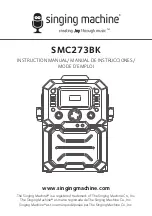
Electrode Selection
As a general rule, the selection of an electrode is straight forward, in that it is only a matter of selecting an
electrode of similar composition to the parent metal. However, for some metals, there is a choice of several
electrodes, each of which has particular properties to suit specific classes of work. It is recommended to
consult your welding supplier for the correct selection of electrode.
The size of the electrode generally depends on the thickness of the section being welded, and the thicker the
section, the larger the electrode required. The table gives the maximum size of electrodes that may be used
for various thicknesses of section based on using a general-purpose type 6013 electrode.
Average Thickness of Material
Maximum Recommended
Electrode Diameter
1.0 - 2.0mm
2.5mm
2.0 - 5.0mm
3.2mm
5.0 - 8.0mm
4.0mm
8.0 - > mm
5.0mm
Correct current selection for a particular job is an important factor in arc welding. With the current set too
low, difficulty is experienced in striking and maintaining a stable arc. The electrode tends to MMA to work,
penetration is reduced, and beads with a distinct rounded profile will be deposited. Too high current is
accompanied by overheating of the electrode resulting undercut and burning through of the base metal and
producing excessive spatter. Normal current for a particular job may be considered as the maximum, which
can be used without burning through the work, over-heating the electrode or producing a rough spattered
surface. The table shows current ranges generally recommended for a general-purpose type 6013 electrode.
Electrode Size (ø mm)
Current Range (Amps)
2.5mm
60 - 100
3.2mm
100 - 130
4.0mm
130 - 165
5.0mm
165 - 260
Arc Length
To strike the arc, the electrode should be gently scraped on the work until the arc is established. There is a
simple rule for the proper arc length; it should be the shortest arc that gives a good surface to the weld. An arc
too long reduces penetration, produces spatter and gives a rough surface finish to the weld. An excessively
short arc will cause sticking of the electrode and result in poor quality welds. The general rule of thumb for
down hand welding is to have an arc length no greater than the diameter of the core wire.
Electrode Angle
The angle that the electrode makes with the work is important to ensure a smooth, even transfer of metal.
When welding in down hand, fillet, horizontal or overhead, the angle of the electrode is generally between 5
and 15 degrees towards the direction of travel. When vertical up welding, the angle of the electrode should be
between 80 and 90 degrees to the workpiece.
Travel Speed
The electrode should be moved along in the direction of the joint being welded at a speed that will give the
size of run required. At the same time, the electrode is fed downwards to keep the correct arc length at all
times. Excessive travel speeds lead to poor fusion, lack of penetration, etc., while too slow a rate of travel will
frequently lead to arc instability, slag inclusions and poor mechanical properties.
Material and Joint Preparation
The material to be welded should be clean and free of any moisture, paint, oil, grease, mill scale, rust or any
other material that will hinder the arc and contaminate the weld material. Joint preparation will depend on
the method used include sawing, punching, shearing, machining, flame cutting and others. In all cases, edges
should be clean and free of any contaminates. The chosen application will determine the type of joint.
MMA (STICK) WELDING GUIDE
49
Summary of Contents for VIPER 182 Mk II
Page 1: ...VIPER 182 Mk II U14001K Operating Manual...
Page 2: ...2...
Page 44: ...13 Replace the front end parts CHANGING THE MIG TORCH LINER ALUMINIUM 44...
Page 57: ...NOTES 57...
Page 58: ...NOTES 58...
Page 59: ...NOTES 59...












































